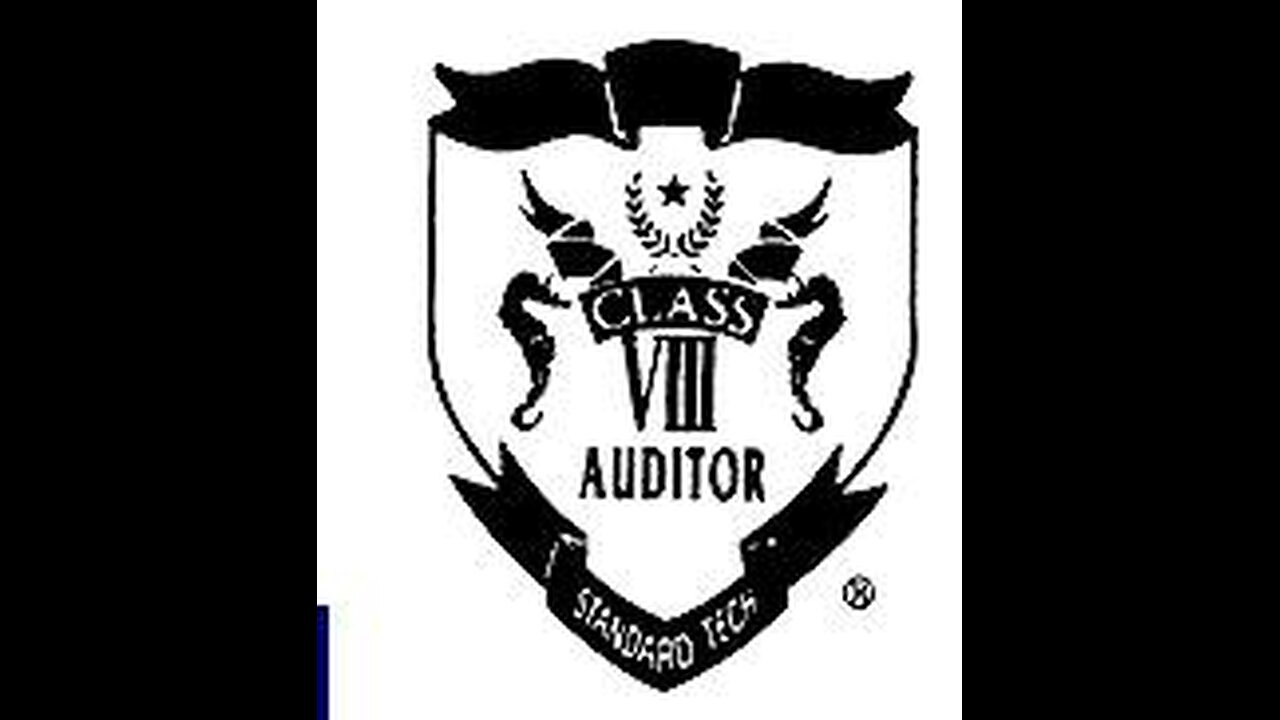Premium Only Content

Class VIII Course #9 The Laws of Listing and Nulling
[Warning, contains OT III Data!]
Resume of Class VIII Tape #9 The Laws of Listing and Nulling (2 October 1968)
Hubbard delivers a detailed lecture on the laws of listing and nulling, stressing their exactness. Incorrect application can damage a PC; precise adherence yields gains. He insists these laws are complete and final.
Key Points
Theory vs. Practice
Knowing the rules is like knowing piano keys—application requires skill and practice, not just theory.
Many auditors fail by misestimating the expertise needed.
Proper Listing Questions
Correct listing questions always go to one item.
Example: “Who or what is trying to unmock you?”
Improper questions (“What is wrong with my case?”) are processes, not lists, and can overwhelm the PC.
Processes vs. Lists
Some questions only look like lists but are actually processes.
Mishandling them as lists without addressing each read produces by-passed charge.
ARC Break Handling
ARC-break registrars should only use the Green Form.
Missed withholds and PTPs are key reasons why PCs blow from orgs.
Lists Must Go to One Item
A complete list = one reading item.
Overlisting or underlisting produces ARC breaks, high TA, or sad effect.
Wrong items can collapse case progress.
Service Facsimiles
Once erased, don’t relist them.
If a service facsimile won’t rehab, suppression or mishandling is likely.
Reference to body thetans: Hubbard remarks that “if the fellow had 500 body thetans you’d get 500 service facsimiles” — illustrating how many could be drawn from them.
Suppress and Invalidate
Suppressed or invalidated items transfer their reads to the button (suppress/invalidate).
Correcting this restores the item’s read.
Indicators of Error
Rising TA during listing = overlisting.
High TA after session = wrong item.
ARC breaks often stem from incomplete or incorrect lists.
No “Magic Button”
No single universal process resolves all cases instantly.
Awareness is gained in gradients; each “button” comes in sequence.
Hubbard notes that even beyond Clear, higher OT levels reveal further complexities:
OT VII: “Above that at 7 he will discover another whole row of aberration.”
OT VIII: “And in 8 there is ‘who made this damned stuff?’”
-
 18:38
18:38
The Illusion of Consensus
1 hour ago“Those are FIGHTING words” – Dave Smith SNAPS at Alex Over Holocaust Denial Accusations
-
 55:40
55:40
The Rubin Report
2 hours agoCNN Host Goes Silent When Guest Proved She’d Done Her Homework on Drug Boat Facts
29.1K43 -
 51:25
51:25
iCkEdMeL
2 hours ago $1.22 earnedCandace Owens BACKS OUT of TPUSA Debate — Tim Pool MELTS DOWN, Fuentes Calls Her Out
9.01K12 -
 LIVE
LIVE
The Mel K Show
2 hours agoMORNINGS WITH MEL K - Let it Bleed-Things are Getting Spicy in DC 12-5-25
942 watching -
 LIVE
LIVE
LFA TV
14 hours agoLIVE & BREAKING NEWS! | FRIDAY 12/05/25
2,731 watching -
 1:44:31
1:44:31
Benny Johnson
3 hours agoThe Darkest Cover Up in FBI History: Explosive January 6th Pipe Bomber Evidence Revealed, They LIED…
50.8K55 -
 59:56
59:56
VINCE
4 hours agoThe Boys At The Bureau Got The Bomber | Episode 182 - 12/05/25 VINCE
201K161 -
 38:34
38:34
Rethinking the Dollar
2 hours agoRetail Silver FOMO Starting In Asia (What do they know?) | RTD News Update
22K2 -
 1:36:52
1:36:52
Graham Allen
5 hours agoCandace Owens BACKS DOWN?! It’s Time To Burn All Of This Insanity To The Ground…..
162K825 -
 2:00:56
2:00:56
Matt Kohrs
16 hours agoLive Day Trading, Breaking Market News & Payday Friday || The Matt Kohrs Show
32.5K5